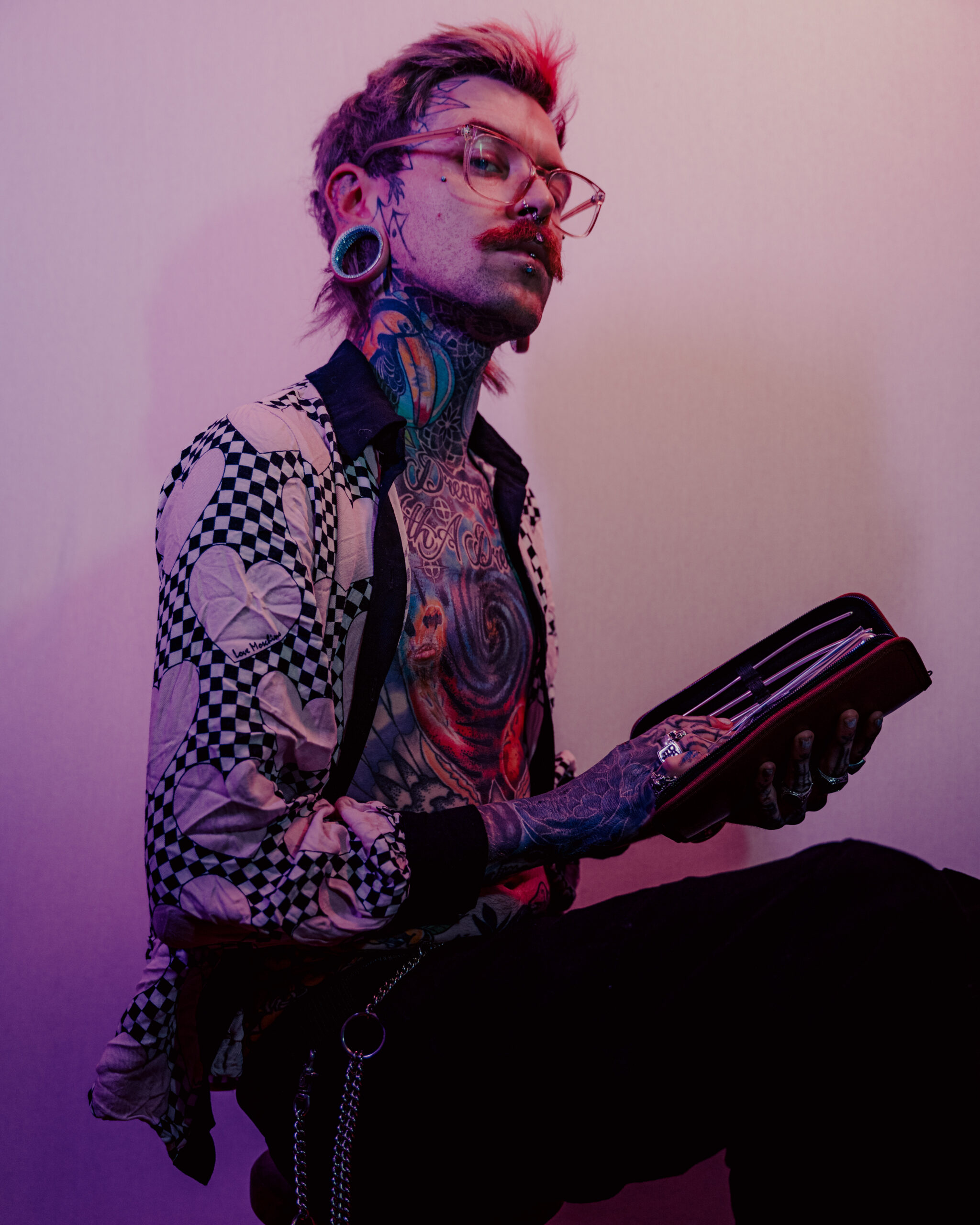Understanding Pansexuality
Pansexuality is a sexual orientation characterized by the potential for romantic and/or sexual attraction to people of all genders, regardless of their gender identity.
Defining Pansexuality
Unlike some other sexual orientations that may focus on attraction to a specific gender or range of genders, pansexual individuals are attracted to people based on their personality, character, and emotional connection rather than solely on their gender.
It’s important to note that pansexuality is distinct from bisexuality. While both involve attraction to multiple genders, bisexuality typically refers to attraction to two genders (often men and women), whereas pansexuality encompasses attraction to all genders, including those outside the traditional binary of male and female.
For a pansexual person, gender is not a determining factor in their attraction. They may be attracted to individuals who identify as male, female, transgender, non-binary, or any other gender identity.
Pansexuality vs. Bisexuality
Understanding pansexuality requires recognizing its core principle: attraction based on individual qualities rather than gender. Pansexual individuals are drawn to people across the entire spectrum of gender identities – male, female, transgender, non-binary, and all points in between. This openness extends to romantic and/or sexual attraction.
It’s crucial to differentiate pansexuality from bisexuality, although both involve attraction to multiple genders. Bisexuality typically focuses on attraction to two genders, often men and women. Pansexuality, however, embraces a broader definition, encompassing attraction to all genders without limitation.
Essentially, for a pansexual person, gender is not a defining element in their attraction. They connect with individuals based on shared interests, values, personalities, and emotional bonds, regardless of their gender identity.
Spectrum of Identities within Pansexuality
Pansexuality is a sexual orientation characterized by the potential for romantic and/or sexual attraction to people of all genders. Unlike some other sexual orientations that may focus on attraction to a specific gender or range of genders, pansexual individuals are attracted to people based on their personality, character, and emotional connection rather than solely on their gender.
Within the pansexual community, there is a spectrum of identities and experiences. Some pansexual individuals may experience attraction equally strongly to all genders, while others may find themselves more drawn to certain genders than others.
Some individuals identify as “omnisexual,” which encompasses attraction to all genders including non-binary identities. Others may use terms like “panromantic” or “pangender” to emphasize romantic or gender-related aspects of their identity.
This diversity within pansexuality highlights the fluidity and complexity of human experience and emphasizes the importance of respecting individual identities and preferences.
Experiences and Challenges Faced by Pansexual Individuals
Like many marginalized communities, pansexual individuals often face unique challenges and experiences. societal misconceptions and lack of understanding can lead to prejudice, discrimination, and feelings of isolation. Pansexual people may encounter difficulties coming out due to fear of rejection or negative reactions from family, friends, or society at large.
Furthermore, the absence of widespread representation of pansexuality in media and popular culture can contribute to a sense of invisibility and make it harder for individuals to feel seen and understood.
Social Stigma and Misconceptions
Social stigma surrounding pansexuality can manifest in various forms. Some people may hold misconceptions about pansexuality, equating it with promiscuity or viewing it as a phase or a trend. These misconceptions can lead to judgment, ridicule, and even harassment.
The lack of widespread understanding and acceptance of pansexuality can also result in individuals facing discrimination in areas such as employment, housing, healthcare, and education.
Experiences of bullying, name-calling, and social exclusion are sadly common for pansexual individuals, particularly during their formative years. These negative experiences can have a profound impact on mental health and well-being.
Overcoming these challenges requires a multi-faceted approach that includes education, awareness-raising, and advocacy. Promoting inclusive environments where diversity is celebrated and all individuals feel safe and respected is essential.
Coming Out and Finding Acceptance
Pansexual individuals may face unique challenges when it comes to coming out and finding acceptance. Societal misconceptions and lack of understanding can lead to prejudice and discrimination, making it difficult for them to be open about their sexual orientation.
Fear of rejection from family, friends, or society at large can also make coming out a daunting experience. The absence of widespread representation of pansexuality in media and popular culture can contribute to feelings of isolation and make it harder for individuals to feel seen and understood.
Social stigma surrounding pansexuality can manifest in various forms, leading to judgment, ridicule, and even harassment. This lack of acceptance can result in discrimination in areas such as employment, housing, healthcare, and education.
Bullying, name-calling, and social exclusion are sadly common experiences for pansexual individuals, particularly during their formative years. These negative experiences can have a lasting impact on mental health and well-being.

Navigating Relationships and Dating
Navigating relationships and dating as a pansexual individual can present unique challenges. Societal norms often frame romantic relationships within a binary framework, which can make it difficult for pansexual people to find partners who understand and accept their attraction to multiple genders.
Finding compatible partners who are open-minded and respectful of their identity can be a significant hurdle. Dating apps and online platforms may not always be inclusive or supportive of pansexuality, potentially leading to negative experiences or a lack of suitable matches.
Communication is crucial in any relationship, but it can be especially important for pansexual individuals to clearly articulate their needs and desires to ensure their partners understand and respect their boundaries.
It’s essential for pansexual individuals to prioritize self-acceptance and surround themselves with supportive communities where they feel seen, heard, and validated.
Representation and Visibility
Representation and visibility are crucial for any marginalized group, and the pansexual community is no exception.
Media Portrayal and Stereotypes
The lack of accurate and diverse representation of pansexual individuals in media, popular culture, and everyday life can contribute to feelings of invisibility and isolation.
When pansexuality is portrayed inaccurately or stereotypically, it reinforces harmful misconceptions and contributes to societal stigma.
Seeing positive and authentic representations of pansexual people in movies, television shows, books, and advertisements helps break down stereotypes and fosters understanding and acceptance.
It allows pansexual individuals to see themselves reflected in the world around them and feel a sense of validation and belonging.

Increased visibility also educates the broader public about pansexuality, challenging misconceptions and promoting empathy and respect.
Advocacy Groups and Community Support
Representation and visibility are crucial for fostering understanding and acceptance of pansexuality. The lack of diverse and accurate representation in media and popular culture can contribute to feelings of invisibility and isolation among pansexual individuals.
When pansexuality is portrayed inaccurately or stereotypically, it reinforces harmful misconceptions and perpetuates stigma. Seeing positive and authentic representations of pansexual people in movies, television shows, books, and advertisements helps break down stereotypes and promotes empathy and understanding.
Increased visibility also educates the broader public about pansexuality, challenging misconceptions and fostering a more inclusive society.
Advocacy groups play a vital role in supporting pansexual individuals and advocating for their rights. These organizations provide resources, support networks, and platforms for raising awareness about pansexuality and combating discrimination.
Through education, advocacy, and community building, these groups work to create a more inclusive and equitable world where pansexual people can live openly and authentically.
Community support is essential for the well-being of pansexual individuals. Finding a sense of belonging and connection with others who share similar experiences can be incredibly empowering and validating.
Support groups, online forums, and social events provide spaces for pansexual people to connect, share their stories, offer support to one another, and build a strong community.
These supportive networks can help individuals navigate the challenges of coming out, coping with societal stigma, and finding acceptance.
The Importance of Inclusive Language
Representation and visibility are crucial for fostering understanding and acceptance of pansexuality. The lack of diverse and accurate representation in media and popular culture can contribute to feelings of invisibility and isolation among pansexual individuals. When pansexuality is portrayed inaccurately or stereotypically, it reinforces harmful misconceptions and perpetuates stigma. Seeing positive and authentic representations of pansexual people in movies, television shows, books, and advertisements helps break down stereotypes and promotes empathy and understanding. Increased visibility also educates the broader public about pansexuality, challenging misconceptions and fostering a more inclusive society.
Advocacy groups play a vital role in supporting pansexual individuals and advocating for their rights. These organizations provide resources, support networks, and platforms for raising awareness about pansexuality and combating discrimination. Through education, advocacy, and community building, these groups work to create a more inclusive and equitable world where pansexual people can live openly and authentically.
- Community support is essential for the well-being of pansexual individuals. Finding a sense of belonging and connection with others who share similar experiences can be incredibly empowering and validating.
- Support groups, online forums, and social events provide spaces for pansexual people to connect, share their stories, offer support to one another, and build a strong community.
These supportive networks can help individuals navigate the challenges of coming out, coping with societal stigma, and finding acceptance.
Celebrating Pansexuality: Embracing Love Without Boundaries
Pansexuality is a sexual orientation characterized by the potential for romantic and/or sexual attraction to people of all genders, regardless of their gender identity. Unlike some other sexual orientations that may focus on attraction to a specific gender or range of genders, pansexual individuals are attracted to people based on their personality, character, and emotional connection rather than solely on their gender.
Understanding pansexuality requires recognizing its core principle: attraction based on individual qualities rather than gender. Pansexual individuals are drawn to people across the entire spectrum of gender identities – male, female, transgender, non-binary, and all points in between. This openness extends to romantic and/or sexual attraction.
It’s crucial to differentiate pansexuality from bisexuality, although both involve attraction to multiple genders. Bisexuality typically focuses on attraction to two genders, often men and women. Pansexuality, however, embraces a broader definition, encompassing attraction to all genders without limitation.
For a pansexual person, gender is not a defining element in their attraction. They connect with individuals based on shared interests, values, personalities, and emotional bonds, regardless of their gender identity.
- Pansexual individuals may experience attraction equally strongly to all genders or find themselves more drawn to certain genders than others.
- Some individuals identify as “omnisexual,” encompassing attraction to all genders including non-binary identities. Others may use terms like “panromantic” or “pangender” to emphasize romantic or gender-related aspects of their identity.
This diversity within pansexuality highlights the fluidity and complexity of human experience and emphasizes the importance of respecting individual identities and preferences.
best sex positions
Elizabeth Joy Photo
Red Nails Green Veggies
- Obagi Blue Peel Radiance Peel Near Thursley, Surrey - October 30, 2025
- Obagi Blue Peel Radiance Peel Near Felbridge, Surrey - October 27, 2025
- Nu-Derm Skin System Near Tolworth, Surrey - October 25, 2025
